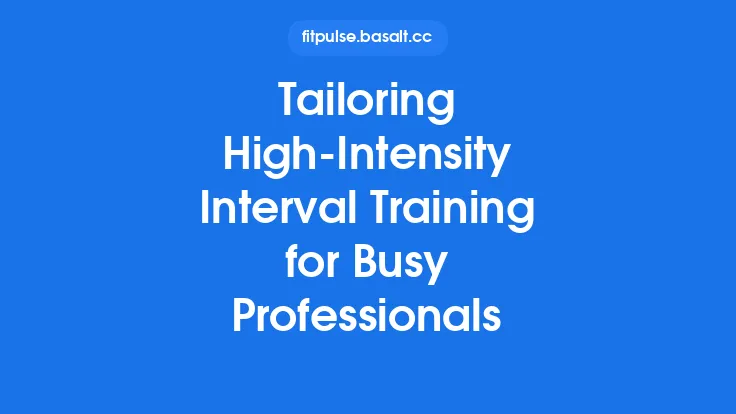Continuing education (CE) is the lifeblood of a thriving fitness profession. As scientific research evolves, new training methodologies emerge, and regulatory landscapes shift, fitness professionals must stay current to deliver safe, effective, and evidence‑based services. Understanding the structure, purpose, and practicalities of CE requirements equips practitioners to meet their certification obligations confidently while enhancing their expertise and marketability.
Why Continuing Education Matters
- Scientific Advancement
Exercise physiology, biomechanics, nutrition, and behavior change science are dynamic fields. Peer‑reviewed studies regularly refine or overturn long‑standing practices (e.g., periodization models, high‑intensity interval training protocols, or the role of micro‑dosing creatine). CE ensures that practitioners integrate the latest evidence into client programming.
- Client Safety and Liability
Updated knowledge about injury prevention, contraindications, and emergency response reduces the risk of adverse events. Many professional liability insurers require proof of recent CE as a condition of coverage.
- Professional Credibility
Employers, gyms, and independent clients often view CE compliance as a marker of professionalism. It signals a commitment to lifelong learning and can differentiate a trainer in a competitive market.
- Regulatory Compliance
Several states and national bodies mandate CE for license renewal or certification maintenance. Failure to meet these requirements can result in suspension or loss of the right to practice.
Core Components of CE Requirements
| Component | Typical Definition | Example Requirement |
|---|---|---|
| Credit Hours (CH) / Continuing Education Units (CEU) | A standardized measure of time spent in approved learning activities. 1 CEU = 10 contact hours in most systems. | 20 CH over a 2‑year recertification cycle. |
| Category Allocation | CE must be earned across specific content areas (e.g., anatomy, program design, special populations). | Minimum 4 CH in “Special Populations” (e.g., older adults, pregnancy). |
| Provider Accreditation | The organization delivering the CE must be recognized by the certifying body or an external accrediting agency (e.g., NCCA, ACCME). | Courses offered by an NCCA‑accredited provider. |
| Delivery Format | CE can be obtained via live workshops, webinars, self‑study modules, conferences, or scholarly activities. | Up to 50 % of required CH may be earned through online webinars. |
| Verification | Documentation (certificates, transcripts, attendance logs) must be retained and submitted upon request. | Digital PDF certificate with course ID and provider signature. |
Understanding each component helps professionals map out a compliant CE plan that aligns with their learning preferences and career goals.
Accredited CE Providers and Their Standards
- Nationally Recognized Accrediting Agencies
- National Commission for Certifying Agencies (NCCA): Sets rigorous standards for curriculum relevance, instructor qualifications, and assessment methods.
- Accreditation Council for Continuing Medical Education (ACCME): Though primarily for health professionals, many fitness CE courses meet ACCME criteria, especially those covering clinical exercise physiology.
- International Association for Continuing Education and Training (IACET): Provides the ANSI/IACET Standard for CE, ensuring consistency across global providers.
- Provider Evaluation Criteria
- Curriculum Alignment: Course objectives must map directly to the competency domains defined by the certifying organization.
- Instructor Credentials: Instructors should hold advanced degrees (M.S. or Ph.D.) or recognized certifications (e.g., CSCS, ACSM EP) and demonstrate expertise in the subject matter.
- Assessment Rigor: Validated quizzes, case studies, or practical evaluations confirm knowledge acquisition.
- Transparency: Clear disclosure of credit hour calculations, cost, and any conflict‑of‑interest statements.
- Common Accredited Platforms
- Professional Associations (e.g., ACSM, NSCA, ISSA) often host webinars, conferences, and online libraries that are automatically NCCA‑approved.
- Universities and Extension Programs: Many offer CE‑eligible courses in exercise science, kinesiology, or nutrition.
- Specialty Organizations (e.g., American Council on Exercise’s “ACE Academy”) provide niche CE in areas like corrective exercise or behavior change.
Credit Hour Calculations and Categories
1. Determining Credit Hours
- Contact Hours vs. CEUs:
- Contact Hours refer to the actual time spent in instruction (e.g., a 2‑hour live workshop equals 2 CH).
- CEUs are a standardized conversion (1 CEU = 10 CH). Some certifying bodies accept either metric; others specify one.
- Self‑Study Modules:
- Typically, a self‑paced online module awards credit based on estimated completion time, verified by a post‑module assessment.
- Example: A 3‑hour video series with a 30‑question quiz may be credited with 3 CH upon passing with ≥80 % correct.
- Conference Attendance:
- Full‑day conferences often allocate 6–8 CH, with additional credits for workshops or pre‑conference seminars.
2. Category Requirements
Most certifying agencies divide CE into thematic buckets to ensure breadth of knowledge:
| Category | Typical Minimum | Rationale |
|---|---|---|
| Fundamentals of Exercise Science | 2–4 CH | Reinforces core physiology, biomechanics, and anatomy. |
| Program Design & Delivery | 3–5 CH | Updates on periodization, modality integration, and client assessment. |
| Special Populations | 2–4 CH | Addresses aging, pregnancy, chronic disease, and disability considerations. |
| Professional Development | 1–2 CH | Covers ethics, business practices, marketing, and legal issues. |
| Emerging Topics | 1–2 CH | Allows flexibility for cutting‑edge subjects like wearable technology or tele‑training. |
Meeting the category minimums prevents over‑specialization and promotes a well‑rounded skill set.
State and National Regulatory Considerations
- State Licensure vs. Certification
- Some jurisdictions (e.g., California, New York) require a state license for personal trainers, which may have distinct CE mandates separate from national certifications.
- Licensure often emphasizes public health and safety, mandating CE in CPR/AED, first aid, and legal liability.
- Reciprocity Agreements
- Certain states honor CE completed in other states if the content aligns with local statutes. However, documentation must explicitly state compliance with the host state’s requirements.
- National Certification Bodies
- Organizations such as ACSM, NSCA, and ISSA set their own CE cycles (typically 2–4 years). While they are not governmental, many employers and insurers treat their standards as de facto regulatory benchmarks.
- Reporting Deadlines
- CE reporting windows vary: some require submission within 30 days of certification expiration, while others allow a grace period of up to 6 months. Missing deadlines can trigger a “lapsed” status, requiring remedial CE or re‑examination.
- Audit Triggers
- Random audits are common. Maintaining a digital repository of certificates, transcripts, and proof of provider accreditation minimizes disruption during an audit.
Documentation and Record‑Keeping Best Practices
- Digital Portfolio: Use cloud‑based storage (e.g., Google Drive, Dropbox) organized by year, category, and provider. Include the original certificate, a screenshot of the course description, and a brief reflective note on key takeaways.
- Standardized Naming Convention:
`YYYYMMDDProviderCourseTitle_CH.pdf`
Example: `20240315ACSMAdvancedExercisePhysiology_3CH.pdf`
- Master CE Log: A spreadsheet with columns for Date, Provider, Course Title, Credit Hours, Category, CEU (if applicable), and Verification Status (e.g., “Submitted”, “Pending Audit”).
- Backup Strategy: Maintain an offline backup (external hard drive or encrypted USB) to protect against cloud service outages.
- Retention Period: Most certifying bodies require records for at least 3 years after the certification cycle ends. Check specific guidelines to avoid premature deletion.
Common Misconceptions and Pitfalls
| Misconception | Reality |
|---|---|
| “Any fitness‑related webinar counts as CE.” | Only courses from accredited providers that meet the certifying body’s curriculum standards are eligible. |
| “Self‑study modules are automatically accepted.” | They must include a validated assessment and be approved by the certifying organization. |
| “I can earn all required credits in a single conference.” | Category limits often restrict the number of credits that can be claimed from a single event. |
| “If I have a certificate, I’m done.” | Documentation must include the provider’s accreditation status, course ID, and proof of completion (e.g., passing score). |
| “CE requirements reset each calendar year.” | Most cycles are based on the certification renewal date, not the calendar year. |
Avoiding these traps saves time, money, and prevents the risk of non‑compliance.
Future Directions and Emerging Formats
- Micro‑Credentials and Digital Badges
- Platforms like Credly and Badgr issue blockchain‑verified badges for short, competency‑focused modules (e.g., “Biomechanics of Sprinting”). While not yet universally accepted, many certifiers are piloting badge integration into CE tracking.
- Virtual Reality (VR) Simulations
- Immersive VR environments allow trainers to practice emergency response, client assessment, and equipment setup in a risk‑free setting. Early adopters report higher knowledge retention, and several accrediting bodies are evaluating VR modules for CE credit.
- Adaptive Learning Systems
- AI‑driven platforms tailor content difficulty based on learner performance, ensuring efficient mastery of complex topics such as metabolic pathways or periodization algorithms.
- Hybrid Conference Models
- Post‑pandemic, many major conferences offer both in‑person and live‑stream options, each eligible for CE. This flexibility expands access for professionals in remote locations.
- Interdisciplinary CE
- Recognizing the overlap between fitness, nutrition, mental health, and technology, certifiers are increasingly allowing CE credits from allied fields (e.g., a nutritionist‑led course on sports fueling) provided the content aligns with the fitness professional’s scope of practice.
Staying aware of these trends positions practitioners to leverage innovative learning opportunities while remaining compliant.
Resources for Staying Informed
- Official Certification Websites: Most certifying bodies maintain a “CE Requirements” page with up‑to‑date credit hour tables, approved provider lists, and downloadable CE logs.
- Professional Associations: Membership in organizations such as the American College of Sports Medicine (ACSM) or the National Strength and Conditioning Association (NSCA) grants access to member‑only webinars, journals, and CE discounts.
- Accrediting Agency Directories: NCCA and IACET publish searchable databases of accredited providers; use these to verify legitimacy before enrolling.
- Industry Newsletters: Subscriptions to newsletters like “Fitness Business Journal” or “Exercise Science Review” often highlight upcoming CE events and regulatory updates.
- Continuing Education Tracking Apps: Tools such as “CE Tracker” or “MyFitnessCE” integrate with calendar apps, send renewal reminders, and generate exportable reports for audit purposes.
By regularly consulting these resources, fitness professionals can anticipate changes, plan their learning pathways proactively, and maintain uninterrupted certification status.
Continuing education is not merely a bureaucratic hurdle; it is a strategic investment in professional competence, client safety, and career longevity. Mastering the mechanics of CE requirements—understanding credit structures, provider accreditation, documentation protocols, and emerging learning modalities—empowers fitness professionals to navigate the renewal process with confidence and to translate new knowledge into superior client outcomes.





